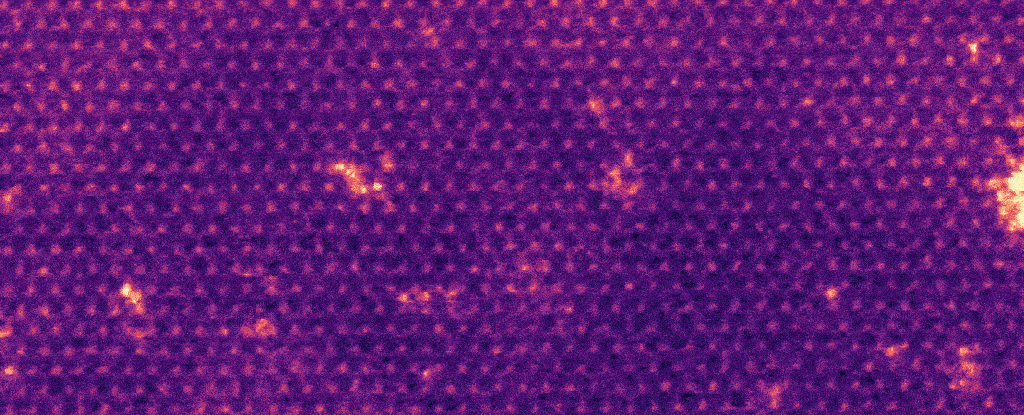Products You May Like
The motion of single atoms through liquid has been caught on camera for the first time.
Using a sandwich of materials so thin they’re effectively two-dimensional, scientists trapped and observed platinum atoms ‘swimming’ along a surface under different pressures.
The results will help us better understand how the presence of liquid alters the behavior of a solid with which it is in contact – which, in turn, has implications that could in the development of new substances and materials.
“Given the widespread industrial and scientific importance of such behavior it is truly surprising how much we still have to learn about the fundamentals of how atoms behave on surfaces in contact with liquids,” explained materials scientist Sarah Haigh of the University of Manchester in the UK.
“One of the reasons information is missing is the absence of techniques able to yield experimental data for solid-liquid interfaces.”
When a solid and a liquid are in contact with each other, the behaviors of both materials are modified where they meet. These interactions are important for understanding a wide range of processes and applications, such as the transport of materials inside our own bodies or the movement of ions inside batteries.
It is, as the researchers note, extremely difficult to view the world on the atomic scale. Transmission electron microscopy (TEM), which uses a beam of electrons to generate an image, is one of the few techniques available.
Even so, obtaining reliable data on the behavior of atoms this way has been tricky. Previous work in graphene liquid cells has been promising, but has yielded inconsistent results. In addition, TEM typically requires a high vacuum environment to run. This is a problem since many materials don’t behave the same way under different pressure conditions.
Thankfully a form of TEM has been developed to operate in liquid and gaseous environments, which is what the team employed for their research.
The next step was to create a special set of microscope “slides” to contain the atoms. Graphene is the ideal material for these experiments, because it is two-dimensional, strong, inert and impermeable. Building on previous work, the team developed a double graphene liquid cell capable of working with existing TEM technology.
This cell was filled with a precisely-controlled salt water solution containing platinum atoms, which the team observed moving about on a solid surface of molybdenum disulfide.
The images revealed some fascinating insights. For example, the atoms moved faster in liquid than outside of it, and choose different places on the solid surface to rest.
In addition, the results inside and outside of a vacuum chamber were different, suggesting that variations in the environment’s pressure can influence how atoms behave. What’s more, results of experiments obtained in vacuum chambers won’t necessarily be indicative of that behavior in the real world.
“In our work we show that misleading information is provided if the atomic behavior is studied in vacuum instead of using our liquid cells,” said materials engineer Nick Clark of the University of Manchester.
“This is a milestone achievement and it is only the beginning – we are already looking to use this technique to support development of materials for sustainable chemical processing, needed to achieve the world’s net zero ambitions.”
The material the team studied is relevant to the production of green hydrogen, but both their techniques and the results they obtained have much broader implications, the researchers said.
The paper has been published in Nature.
